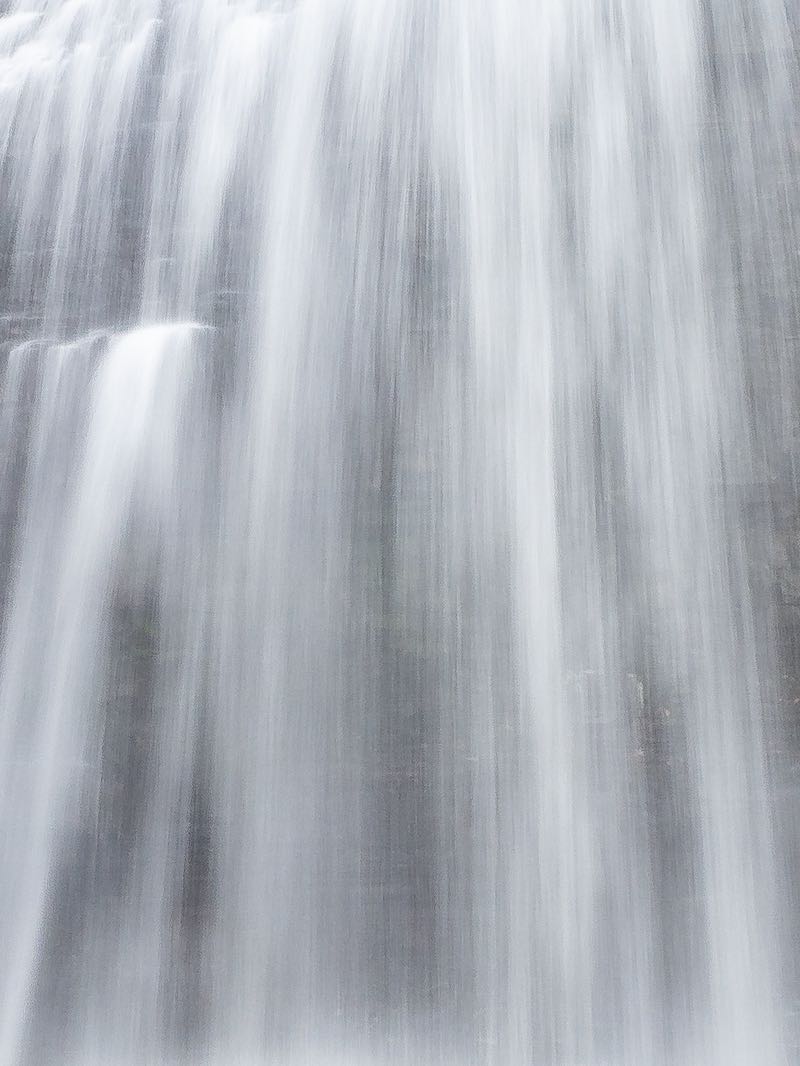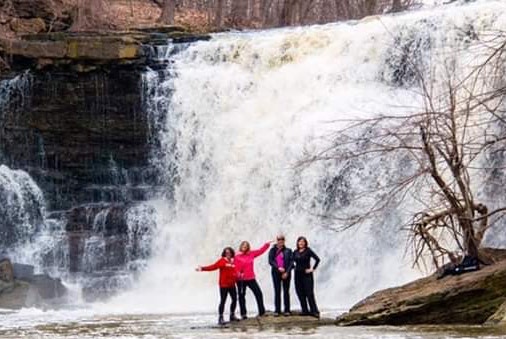






Visiting waterfalls can be a safe activity for anyone. But we still need to be careful: people have died at over 30 Ontario waterfalls.
This page outlines some of the things to look out for. Remember, your safety is your responsibility.
NOTE: You don't have permission to use this website unless you read, understand and accept the Website Disclaimer.


Google Maps and GPS make it easier than ever to find waterfalls. Unfortunately, these tools aren't perfect. Some remote roads that are shown on Google Maps are not be driveable. Others can be mislabelled or not labelled at all.
You need to use caution when exploring more remote areas. The condition of backroads can change from year to year, season to season, or even from day to day. Roads that are easily travelled in summer may be completely impassable in winter.
Information on this site can become out of date. Places that used to be safe may no longer be safe. If something looks unsafe, stay out!
Lots of waterfalls are found in populated areas where help is readily available nearby. Many others are isolated; you might be the only visitor that entire day!
Cell service is still not available in some parts of northern Ontario. Even in more populated areas, cell service can fail when you are surrounded by solid rock in a deep river gorge. Also, remember that gas stations can be 2 hours away in northern Ontario.
Tips: Consider telling someone where you will be. I usually bring a few vitals in case my car gets stuck: extra water, food, and a sweater if it’s cold.


Many waterfalls in Ontario are very close to the road. A short paved or gravel trail may allow you to visit in style! Other falls require a bit of hiking.
The biggest risks while hiking are probably becoming lost, twisting an ankle, dehydration, sunburn, and frostbite. A little preparation and common sense can reduce the risk.
Though limited, there are a few plants and animals to avoid. I had a bad case of poison ivy after a trip to Wawa Falls. Other plants like giant hogweed and giant parsnip are spreading, and can cause bad skin burns and blisters. Tip: Learn to identify these plants.
Ticks are becoming more common in Ontario. The deer tick can spread Lyme Disease. Tip: Learn about avoiding ticks, carry a tick removal kit, and avoid thick brush.
Outside of southern Ontario you are in bear territory. Black bears normally try to avoid people, and attacks are very rare. While your chances of a bad bear encounter are very, very small, you should still learn to be bearwise. I carry bearspray when I'm hiking in remote areas. Many others don't.
The only venomous snake in Ontario is the Massasauga Rattlesnake. They are very shy and only found in a few parts of Ontario. But this does include some areas where waterfalls are found, like the Bruce Peninsula and areas around Georgian Bay. Tip: Learn about these snakes and how to avoid them.


Many waterfalls have fences, safety railings and viewing platforms. Many more do not, however, and visitors need to be aware of their surroundings at all times.
Steep slopes and vertical drops are found at all waterfalls. Not just at the waterfall, but also in the rocky areas around them. You could fall tens of metres at some places! But even a tumble of just a few metres can be deadly.
Remember that erosion is most active around steep slopes. Rocky ledges may not be as solid as they seem. Stay back from the edge!
Wet rocks around waterfalls can be slippery, deceptively so! This can be caused by ice but also by algae, both of which can be difficult to spot. This is especially risky at waterfalls with smooth rock near the edge. Tip: Stay off wet/shiny rocks beside waterfalls, especially ones that are smooth.
Dangerous waters are found all around waterfalls. Even small waterfalls can pose risks; a boy drowned at Furnace Falls in Haliburton in 2009. This falls is very low, with no gorge. This is proof that tragedy can happen anywhere. Please stay back.
The force of water at many cascade-type falls will easily overpower even the strongest swimmers. Unfortunately, the lack of steep vertical cliffs at cascades can give visitors a false sense of security.
I was lucky enough to take water safety training around a small cascade in the Elora Gorge. The power of rushing water is incredible. Falls with chaotic shapes can cause water to smash its way between jagged rock outcrops and boulders. You don’t want to be in this!

This project recommends against swimming, jumping or wading at ANY waterfall in Ontario. Why?
Waterfalls are not Waterparks!
Unlike a real waterpark, waterfalls are not engineered or safety-checked for our recreation. They are wild spaces. People have died at over 30 waterfalls in Ontario.
They've drowned in strong currents or after jumping into shallow water, or by slipping on algae-covered rocks. Bedrock cracks hidden underwater have grabbed feet and never let go. Yes, there are some places where people have swam safely for years. But they aren't posted here.


Aside from physical harm, many people don't know that streams in southern Ontario can be heavily contaminated by bacteria and viruses. This comes from both farm runoff and sewage discharges. I know a family that all got sick swimming at Falls Reserve.
Gross! Some waterfalls in urban areas are fed by 'combined sewer overflows'. (Watch an informative video). During a storm, overlowing sanitary sewers can dump raw human sewage into these creeks. This means you could be swimming in poop. Yes, it does!
Sadly, the risks of visiting waterfalls are real. People have died at over 30 Ontario waterfalls (that I know of). They have been injured at many more.
Previous versions of this webpage included a list of sites where people have lost their lives, been seriously injured, or needed rescuing by emergency services. Unfortunately, the list is longer than it was before, and I have opted to create a separate page.
See the list of Injuries and Deaths at waterfalls in Ontario.



Join our Facebook community to share tips, photos and updates. Operating since 2011, this well-moderated, respectful, and informative group is the hub of Ontario's waterfalling community. (Photo by Martin Van Opstal)
